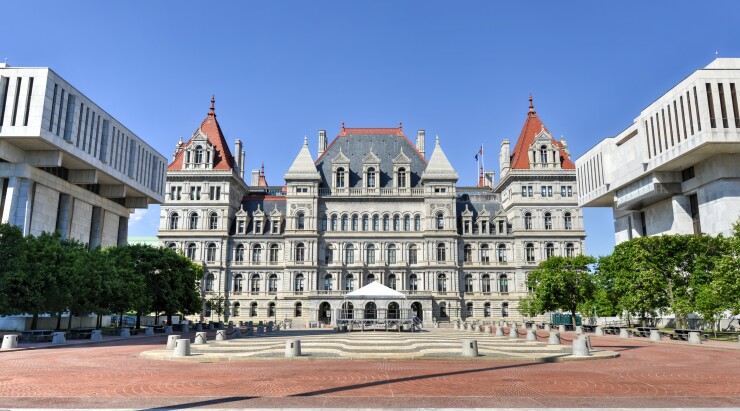Moody’s Investors Service Wednesday upgraded New York State’s issuer rating and its general obligation, personal income tax revenue and sales tax revenue bonds to Aa1 from Aa2.
“The upgrade to Aa1 for New York’s issuer rating reflects a significant increase in resources combined with agile financial management that has resulted in balanced or nearly budgets projected through the state’s five-year financial plan,” Moody’s said.
The outlook was revised to stable from positive at the upgraded rating.
Adobe Stock
In connection with the state upgrade, Moody’s also raised the rating on New York State Workers’ Compensation Board’s employer assessment revenue bonds to Aa1 from Aa2 and the ratings on other appropriation-backed debt of the state, including bonds of the state’s Mental Health Services Facilities and the Building Aid Revenue Bonds of the New York City Transitional Finance Authority, to Aa2 from Aa3.
As of March 31, 2021, the state had about $77 billion in debt outstanding, inclusive of the TFA bonds and bond premium, according to Moody’s.
Moody’s said the Aa1 issuer rating reflects the state’s large and diverse economy, ample fund balance and liquidity and a moderate level of direct leverage that results from a conservatively managed pension system.
The rating agency also noted some possible areas of concern.
“The rating also incorporates risks associated with the Metropolitan Transit Authority, a component unit of the state, and uncertainties regarding recovery of the office-intensive New York City metropolitan area, which is the key driver of the state’s economy,” Moody’s said. “The rating also recognizes New York’s relatively high cost of living and reliance on the volatile financial services industry.”
The rating agency said the stable outlook takes into account all the resources and budget management tools that are available to the state to align spending and revenue.
“The state’s moderate leverage will allow it to absorb some increased debt for its own needs and those of the MTA, and various budget management tools that provide financial flexibility will enable the state to achieve budget balance if developments cause the state’s revenue and spending trends to diverge from the baseline,” Moody’s said.
